Wednesday, June 26. 2013
The audacious plan to end hunger with 3-D printed food
Via Computed·Blg via Quartz
-----
Anjan Contractor’s 3D food printer might evoke visions of the “replicator” popularized in Star Trek, from which Captain Picard was constantly interrupting himself to order tea. And indeed Contractor’s company, Systems & Materials Research Corporation, just got a six month, $125,000 grant from NASA to create a prototype of his universal food synthesizer.
But Contractor, a mechanical engineer with a background in 3D printing, envisions a much more mundane—and ultimately more important—use for the technology. He sees a day when every kitchen has a 3D printer, and the earth’s 12 billion people feed themselves customized, nutritionally-appropriate meals synthesized one layer at a time, from cartridges of powder and oils they buy at the corner grocery store. Contractor’s vision would mean the end of food waste, because the powder his system will use is shelf-stable for up to 30 years, so that each cartridge, whether it contains sugars, complex carbohydrates, protein or some other basic building block, would be fully exhausted before being returned to the store.
Ubiquitous food synthesizers would also create new ways of producing the basic calories on which we all rely. Since a powder is a powder, the inputs could be anything that contain the right organic molecules. We already know that eating meat is environmentally unsustainable, so why not get all our protein from insects?
If eating something spat out by the same kind of 3D printers that are currently being used to make everything from jet engine parts to fine art doesn’t sound too appetizing, that’s only because you can currently afford the good stuff, says Contractor. That might not be the case once the world’s population reaches its peak size, probably sometime near the end of this century.
“I think, and many economists think, that current food systems can’t supply 12 billion people sufficiently,” says Contractor. “So we eventually have to change our perception of what we see as food.”
There will be pizza on Mars
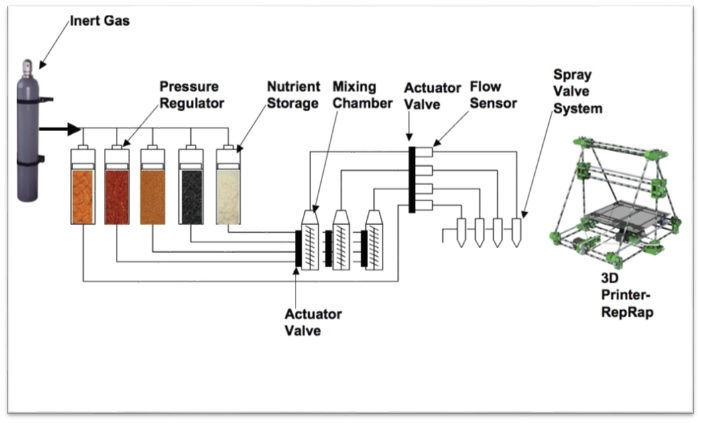
The ultimate in molecular gastronomy. (Schematic of SMRC’s 3D printer for food.)SMRC
If Contractor’s utopian-dystopian vision of the future of food ever comes to pass, it will be an argument for why space research isn’t a complete waste of money. His initial grant from NASA, under its Small Business Innovation Research program, is for a system that can print food for astronauts on very long space missions. For example, all the way to Mars.
“Long distance space travel requires 15-plus years of shelf life,” says Contractor. “The way we are working on it is, all the carbs, proteins and macro and micro nutrients are in powder form. We take moisture out, and in that form it will last maybe 30 years.”
Pizza is an obvious candidate for 3D printing because it can be printed in distinct layers, so it only requires the print head to extrude one substance at a time. Contractor’s “pizza printer” is still at the conceptual stage, and he will begin building it within two weeks. It works by first “printing” a layer of dough, which is baked at the same time it’s printed, by a heated plate at the bottom of the printer. Then it lays down a tomato base, “which is also stored in a powdered form, and then mixed with water and oil,” says Contractor.
Finally, the pizza is topped with the delicious-sounding “protein layer,” which could come from any source, including animals, milk or plants.
The prototype for Contractor’s pizza printer (captured in a video, above) which helped him earn a grant from NASA, was a simple chocolate printer. It’s not much to look at, nor is it the first of its kind, but at least it’s a proof of concept.
Replacing cookbooks with open-source recipes

SMRC’s prototype 3D food printer will be based on open-source hardware from the RepRap project.RepRap
Remember grandma’s treasure box of recipes written in pencil on yellowing note cards? In the future, we’ll all be able to trade recipes directly, as software. Each recipe will be a set of instructions that tells the printer which cartridge of powder to mix with which liquids, and at what rate and how it should be sprayed, one layer at time.
This will be possible because Contractor plans to keep the software portion of his 3D printer entirely open-source, so that anyone can look at its code, take it apart, understand it, and tweak recipes to fit. It would of course be possible for people to trade recipes even if this printer were proprietary—imagine something like an app store, but for recipes—but Contractor believes that by keeping his software open source, it will be even more likely that people will find creative uses for his hardware. His prototype 3D food printer also happens to be based on a piece of open-source hardware, the second-generation RepRap 3D printer.
“One of the major advantage of a 3D printer is that it provides personalized nutrition,” says Contractor. “If you’re male, female, someone is sick—they all have different dietary needs. If you can program your needs into a 3D printer, it can print exactly the nutrients that person requires.”
Replacing farms with sources of environmentally-appropriate calories

2032: Delicious Uncle Sam’s Meal Cubes are laser-sintered from granulated mealworms; part of this healthy breakfast.TNO Research
Contractor is agnostic about the source of the food-based powders his system uses. One vision of how 3D printing could make it possible to turn just about any food-like starting material into an edible meal was outlined by TNO Research, the think tank of TNO, a Dutch holding company that owns a number of technology firms.
In TNO’s vision of a future of 3D printed meals, “alternative ingredients” for food include:
- algae
- duckweed
- grass
- lupine seeds
- beet leafs
- insects
From astronauts to emerging markets
While Contractor and his team are initially focusing on applications for long-distance space travel, his eventual goal is to turn his system for 3D printing food into a design that can be licensed to someone who wants to turn it into a business. His company has been “quite successful in doing that in the past,” and has created both a gadget that uses microwaves to evaluate the structural integrity of aircraft panels and a kind of metal screw that coats itself with protective sealant once it’s drilled into a sheet of metal.
Since Contractor’s 3D food printer doesn’t even exist in prototype form, it’s too early to address questions of cost or the healthiness (or not) of the food it produces. But let’s hope the algae and cricket pizza turns out to be tastier than it sounds.
Related Links:
Personal comment:
It looks like cats and dogs are already eating "rapid prototyped" food --from what I see on the pictures here-- and are a step forward in the future from us! ;)
But would it be given to AdriÓ Ferran, it could start to look and taste like something!
But we could also put this in perspective with the recommendation from UN (Food & Agriculture) that humanity should eat more insects in the future, both because it needs less energy and produces less carbon dioxide to produce 1kg of insects (2kg of food produce 1 kg of insects while 20kg produce 1kg of meat...) and because they provide good and healthy nutriments. As many people still don't like to eat insects due to their aspect, turn them into powder and print them might be an interesting way.
Wednesday, June 19. 2013
Augmenting Social Reality in the Workplace
-----
By Ben Waber
A new line of research examines what happens in an office where the positions of the cubicles and walls—even the coffee pot—are all determined by data.
Can we use data about people to alter physical reality, even in real time, and improve their performance at work or in life? That is the question being asked by a developing field called augmented social reality.
Here’s a simple example. A few years ago, with Sandy Pentland’s human dynamics research group at MIT’s Media Lab, I created what I termed an “augmented cubicle.” It had two desks separated by a wall of plexiglass with an actuator-controlled window blind in the middle. Depending on whether we wanted different people to be talking to each other, the blinds would change position at night every few days or weeks.
The augmented cubicle was an experiment in how to influence the social dynamics of a workplace. If a company wanted engineers to talk more with designers, for example, it wouldn’t set up new reporting relationships or schedule endless meetings. Instead, the blinds in the cubicles between the groups would go down. Now as engineers passed the designers it would be easier to have a quick chat about last night’s game or a project they were working on.
Human social interaction is rapidly becoming more measurable at a large scale, thanks to always-on sensors like cell phones. The next challenge is to use what we learn from this behavioral data to influence or enhance how people work with each other. The Media Lab spinoff company I run uses ID badges packed with sensors to measure employees’ movements, their tone of voice, where they are in an office, and whom they are talking to. We use data we collect in offices to advise companies on how to change their organizations, often through actual physical changes to the work environment. For instance, after we found that people who ate in larger lunch groups were more productive, Google and other technology companies that depend on serendipitous interaction to spur innovation installed larger cafeteria tables.
In the future, some of these changes could be made in real time. At the Media Lab, Pentland’s group has shown how tone of voice, fluctuation in speaking volume, and speed of speech can predict things like how persuasive a person will be in, say, pitching a startup idea to a venture capitalist. As part of that work, we showed that it’s possible to digitally alter your voice so that you sound more interested and more engaged, making you more persuasive.
Another way we can imagine using behavioral data to augment social reality is a system that suggests who should meet whom in an organization. Traditionally that’s an ad hoc process that occurs during meetings or with the help of mentors. But we might be able to draw on sensor and digital communication data to compare actual communication patterns in the workplace with an organizational ideal, then prompt people to make introductions to bridge the gaps. This isn’t the LinkedIn model, where people ask to connect to you, but one where an analytical engine would determine which of your colleagues or friends to introduce to someone else. Such a system could be used to stitch together entire organizations.
Unlike augmented reality, which layers information on top of video or your field of view to provide extra information about the world, augmented social reality is about systems that change reality to meet the social needs of a group.
For instance, what if office coffee machines moved around according to the social context? When a coffee-pouring robot appeared as a gag in TV commercial two years ago, I thought seriously about the uses of a coffee machine with wheels. By positioning the coffee robot in between two groups, for example, we could increase the likelihood that certain coworkers would bump into each other. Once we detected—using smart badges or some other sensor—that the right conversations were occurring between the right people, the robot could move on to another location. Vending machines, bowls of snacks—all could migrate their way around the office on the basis of social data. One demonstration of these ideas came from a team at Plymouth University in the United Kingdom. In their “Slothbots” project, slow-moving robotic walls subtly change their position over time to alter the flow of people in a public space, constantly tuning their movement in response to people’s behavior.
The large amount of behavioral data that we can collect by digital means is starting to converge with technologies for shaping the world in response. Will we notify people when their environment is being subtly transformed? Is it even ethical to use data-driven techniques to persuade and influence people this way? These questions remain unanswered as technology leads us toward this augmented world.
Ben Waber is cofounder and CEO of Sociometric Solutions and the author of People Analytics: How Social Sensing Technology Will Transform Business, published by FT Press.
Personal comment:
Following my previous posts about data, monitoring or data centers: or when your "ashtray" will come close to you and your interlocutor, at the "right place", after having suggested to "meet" him...
Besides this trivial (as well as uninteresting and boring) functional example, there are undoubtedly tremendous implications and stakes around the fact that we might come to algorithmically negociated social interactions. In fact that we might increase these type of interactions, including physically, as we are already into algorithmic social interactions.
Which rules and algorithms, to do what? Again, we come back to the point when architects will have to start to design algorithms and implement them in close collaboration with developers.
Monday, June 17. 2013
Alive 2013
An interesting conference that will take place at the ETHZ CAAD department next July that I'm fowarding here:
---------------
Via DARCH - ETHZ
By Manuel Kretzer
Dear friends, colleagues and students,
I'm happy to invite you to join us for the - international symposium on adaptive architecture
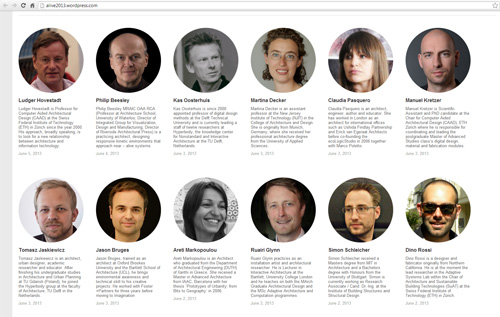
The full day event will be take place on July 8th, 2013 / 9:00 - 18:00 at the Chair for Computer Aided Architectural Design ETH Zürich-Hönggerberg, HPZ Floor F.
Speakers include: Prof. Ludger Hovestadt (ETH Zürich, CH) | Prof. Philip Beesley (University of Waterloo, CA) | Prof. Kas Oosterhuis (TU Delft, NL) Martina Decker (DeckerYeadon, US) | Claudia Pasquero (ecoLogicStudio, UK) | Manuel Kretzer (ETH Zürich, CH) Tomasz Jaskiewicz (TU Delft, NL) | Jason Bruges (Jason Bruges Studio, UK) | Areti Markopoulou (IAAC, ES) | Ruairi Glynn (UCL, UK) Simon Schleicher (Universität Stuttgart, DE) | John Sarik (Columbia University, US) | Stefan Dulman (Hive Systems, NL)
More info on the speakers, the detailed program, location and registration can be found on the event's website and the attached flyer. www.alive2013.wordpress.com
The symposium is free of charge however registration until July 3rd, 2013 is obligatory. Seats are limited. http://alive13.eventbrite.com
The event is organised by Manuel Kretzer and Tomasz Jaskiewicz, hosted by the Chair for CAAD and supported through the Swiss National Science Foundation.
Tuesday, June 11. 2013
Deterritorialized Living, residency, storyboard for workshop and follow-up #1 (open call)
By fabric | ch
-----
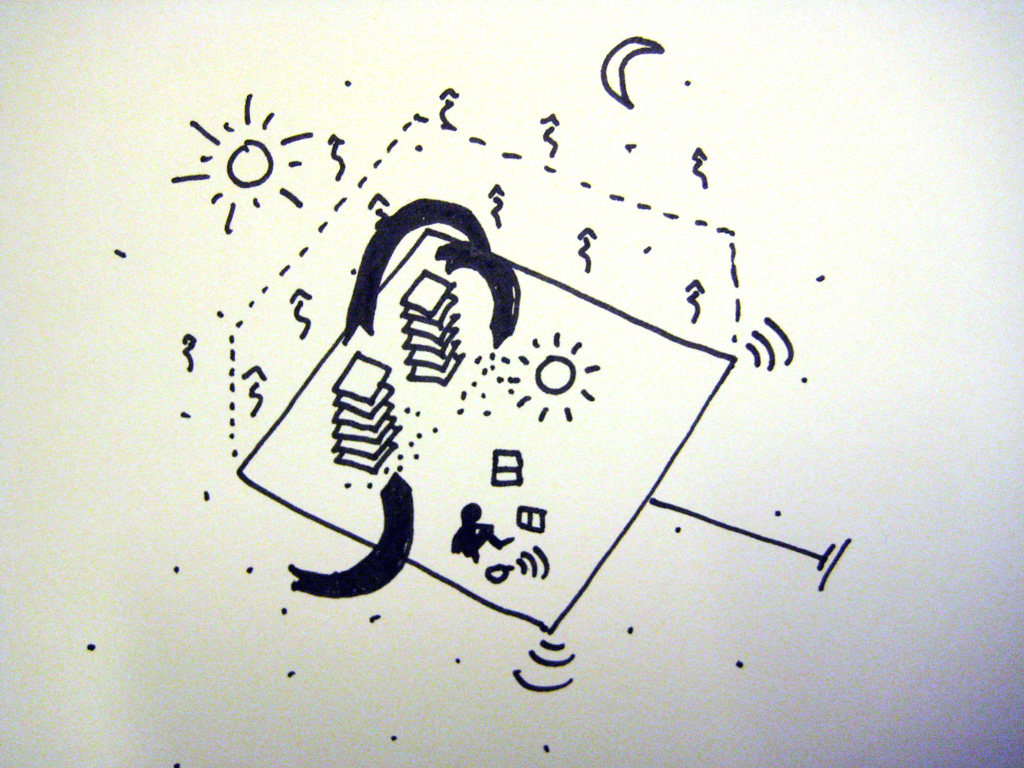
I came back from Beijing more than a month ago now and before Christian Babski will return next week to China for fabric | ch during another month to finish our residency at the Tsinghua University (until mid July), I'm taking a bit of time to write a follow-up about the short workshop/sketch session I headed there with the students of Prof. Zhang Ga, at the Tsinghua Art & Sciences Media Laboratory.
The students originated from many different fields of art, design and sciences and worked in interdisciplinary teams. I must admit that the results didn't really reach my (certainly too high) expectations and ended somehow into too general and a bit precictable projects. Especially because the students didn't have time to go any further than some rough sketches due to parallel academic activities. Nonetheless, the ideas developed during their week of work helped us discuss and clear some paths for our own project. We plan to finish it this summer.

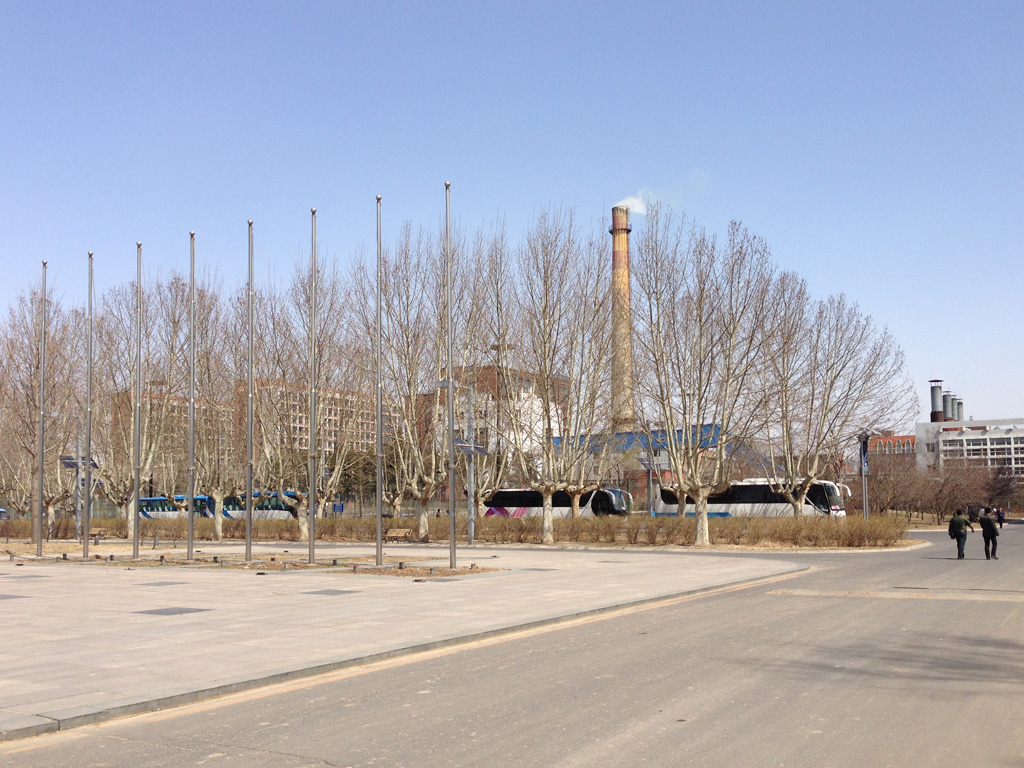
The good related news that came out of this is that fabric | ch together with TASML plan to further develop the ideas that surround the subject of our workshop/residency (Deterritorialized Living): we will open a call on different university campuses and art schools in China (Tsinghua and CAFA in Beijing, the China Academy of Arts in Hangzhou and possibly Tongji in Shanghai) for interdisciplinary teams of architects, interaction designers, designers at large, artists and scientists next September. Mainly, this open call, so as our full residency work will become an Associate Project during the next and much anticipated Lisbon Triennale (Close, Closer) co-curated by Beatrice Galilee, Liam Young, Mariana Pestana and Jose Esparza Chong Cuy.
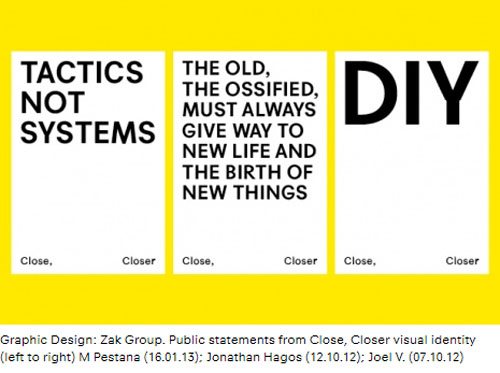
The purpose of our residency is to work around a new project in relation with the idea of "deterritorialization", understood in our case as a state of decontextualisation / dislocation / disembodiment / ... triggered by networked services, "clouds" of all sorts and intensive mobility (physical and mediated therefore), as well as through varied artificialization phenomena.
The physical figure of the data center appears undoubtedly behind this "state" that interests us, so far mainly (but only) as the infrastructure that holds it. Yet the paradox is, and that's where it probably gets more interesting, that "deterritorialization" is becoming very ambient these days... It's almost a new "context", a geo-engineered one (?) that follows us everywhere: a situation that is always potentially present, somehow proximate. We live in this "context" (too). The intention of our scheme is therefore to consider it and to develop artifacts within this frame of research.
At this state of evolution of this specific work, we plan that our residency project will end up into a proposal similar in its form to a previous project we did in collaboration with architect Philippe Rahm, back in 2001 (!) and 2009 (I-Weather): an open platform, a processed and networked atmosphere that everybody will be able to connect to, so to develop their own projects and devices. We hope to deliver an "ambient deterritorialization" in the form of a made atmosphere, the most elementary architecture according to us, that will also act in some ways as an information design about the global state of networks. This atmosphere will then serve us for more elaborate projects and installations.
Workshop:
The workshop we held with the students was considering the situation I roughly described above. Yet we decided to shrink it to a managable size: the computers cabinet (which could be considered as a very small, movable data center), but one that would be big enough to become permanently inhabitable though. The domestic inhabitability of this structure for one or two persons becoming part of our design brief.
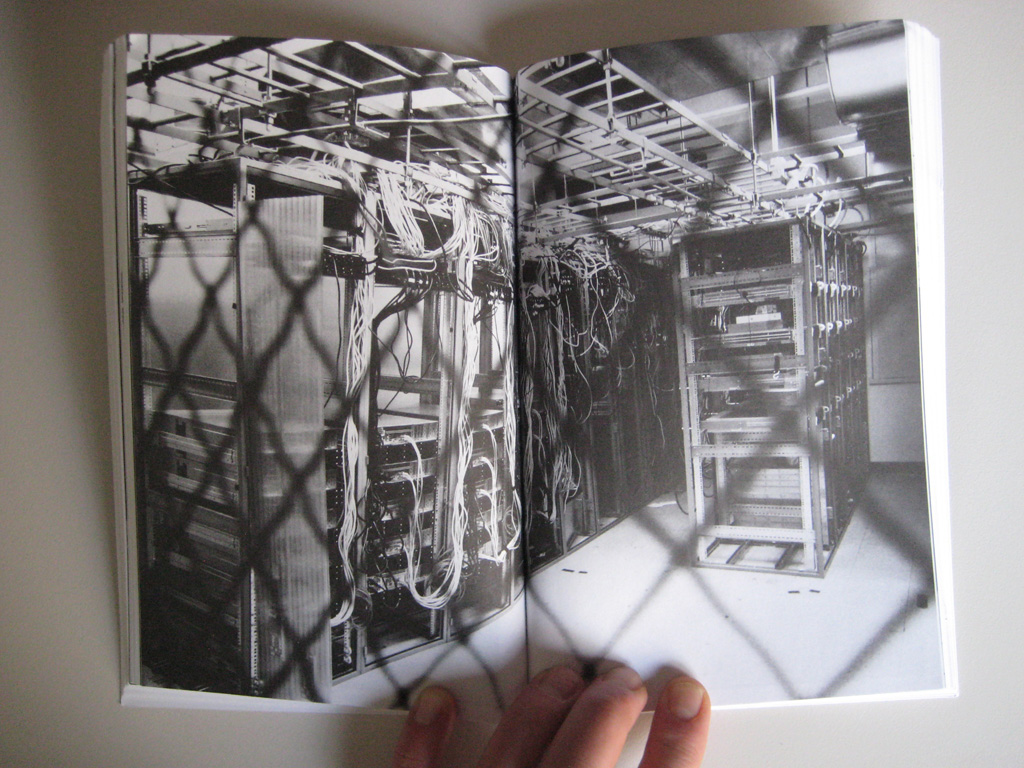
Image of several servers' cabinets taken out of Clog: Data Space (2012).
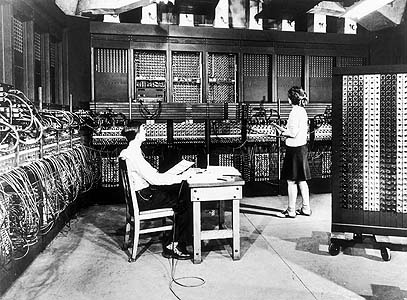
... and one of the first general purpose computer, the Eniac I, back in 1946.
Due to its new "program", this extended computers cabinet would then have to combine some specific physical needs for the machines (i.e. to cool down the servers with fresh air and to expulse hot and ionized air outside, energy supply) and for humans (breathable air, livable levels of heat and humidity, comfort zone, etc.), possibly while trying to find some symbiosis between them AND to provide the frame for dedicated mediated services.
We added a twist to our fictional brief, which was the existence of a second "sun" in the cabinet... In our minds, this second sun would be one of the artifacts we planed to develop in the context of our residency: Deterritorialized Daylight, a permanent daylight, always on yet constantly and slowly varying in its intensity.
Step by step storyboard for the workshop: "Inhabiting the computers cabinet, with two suns"

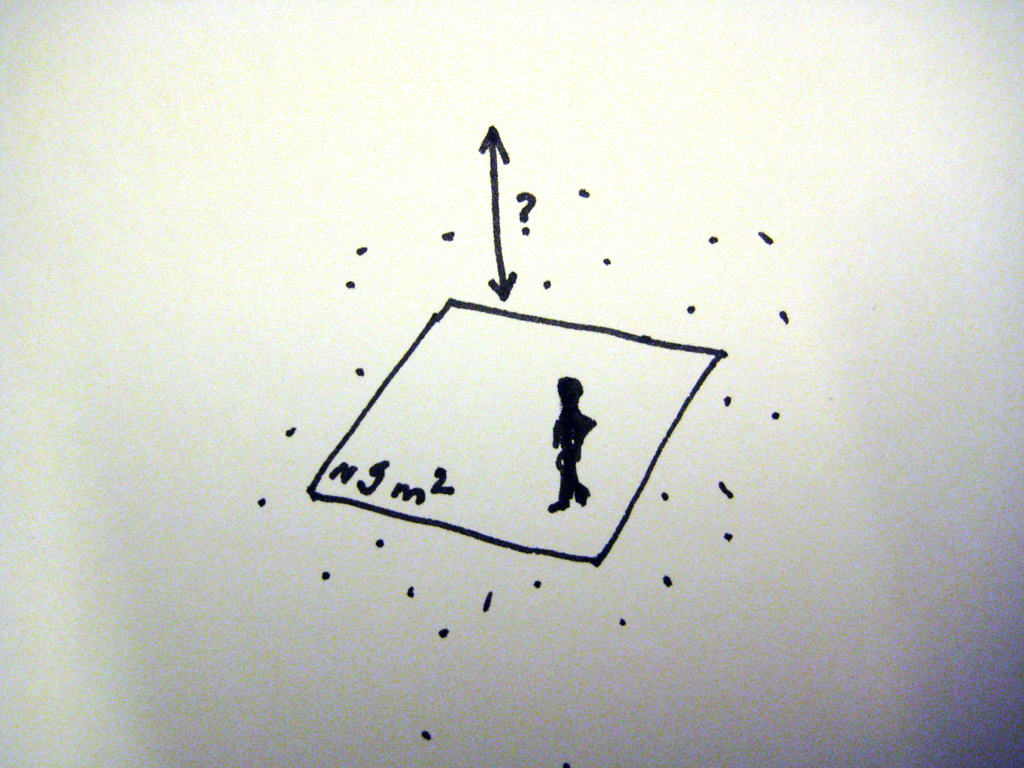
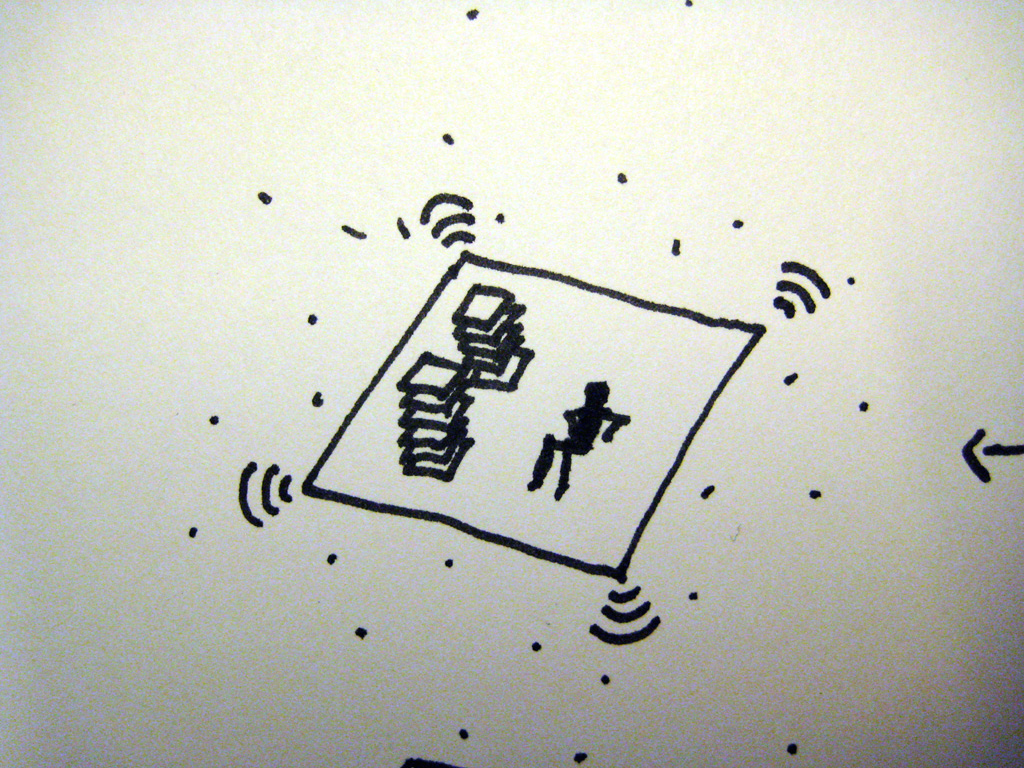
(1, left) 9 square meters (in any shape) to inhabit. Height is free to define. Fresh air surrounds this area. This is the expanded space of the Computers Cabinet. (2, right) A certain number of servers populate this space, along with the person(s) that inhabit it. Machines and humans have to share this place. The space is connected to the nearby and far outsides (by the means of physical and network communications). It provides services of different sorts, physical and digital, local and networked.
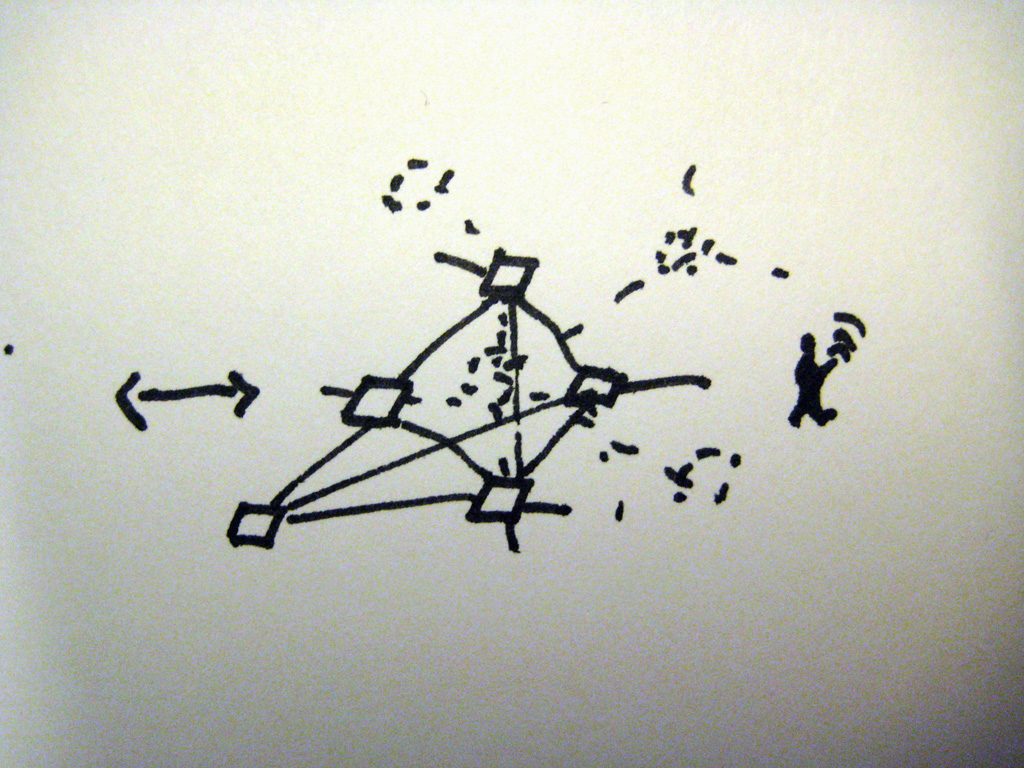
(3) The 9 m2 Computers Cabinet is part of a larger network of connected cabinets that possibly create a distributed larger structure.
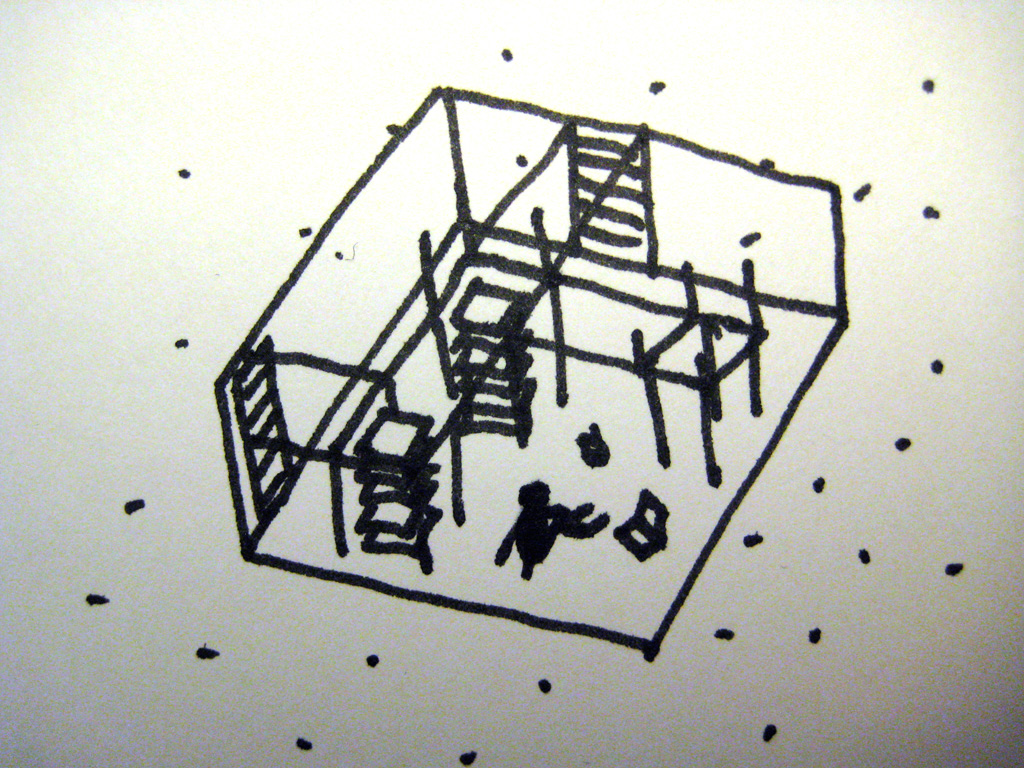
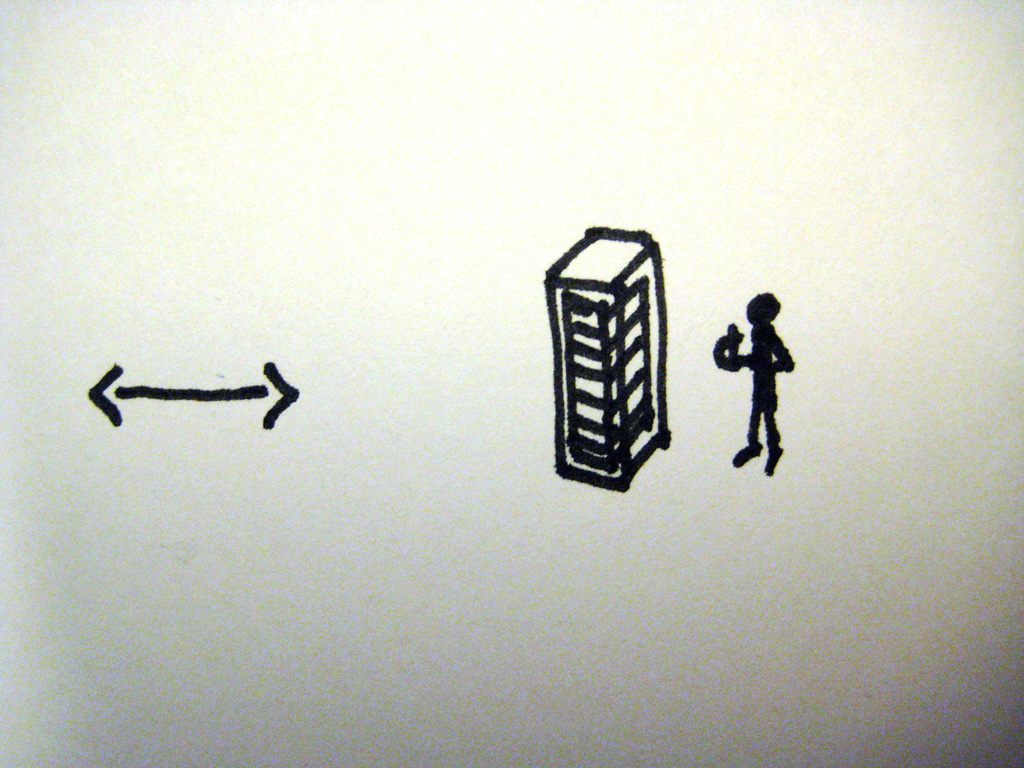
(4) The 9 m2 livable Computers Cabinet, with its computers and racks (which modularity, organization and shape can also be redesigned) could be considered as the extension of a regular servers cabinet (5).

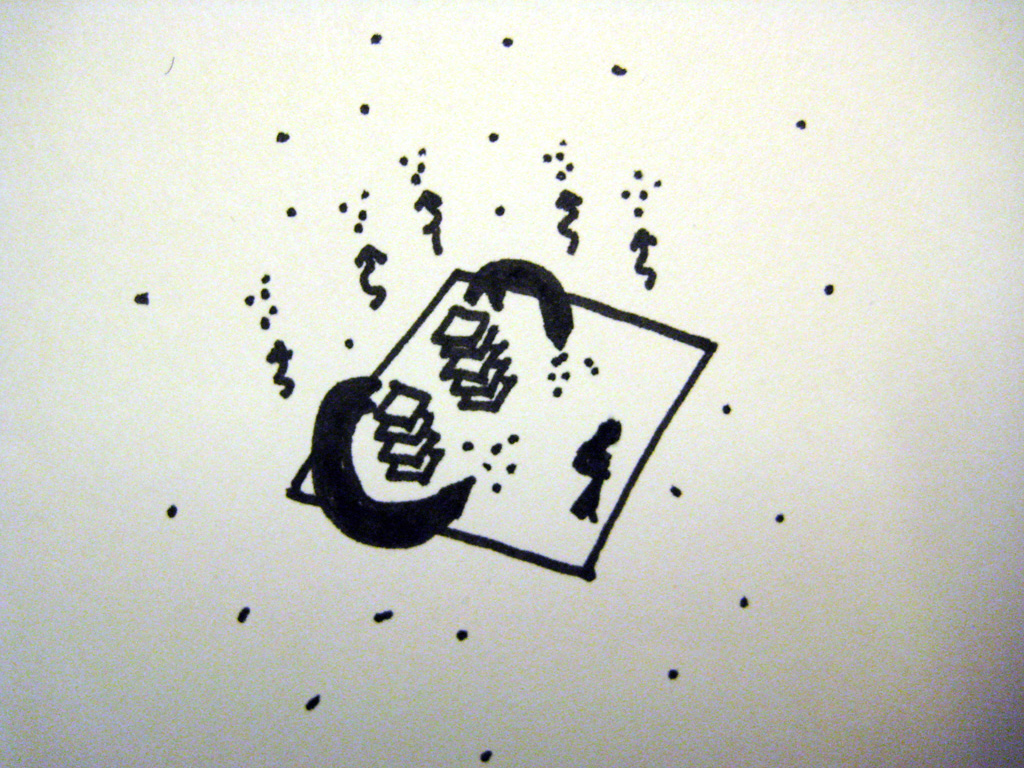
(6) Fresh air needs to enter the space and cool down the machines. (7) Hot and ionized air comes out of the computers. Not very pleasant to breathe. Ionized air triggers electrostaticity.

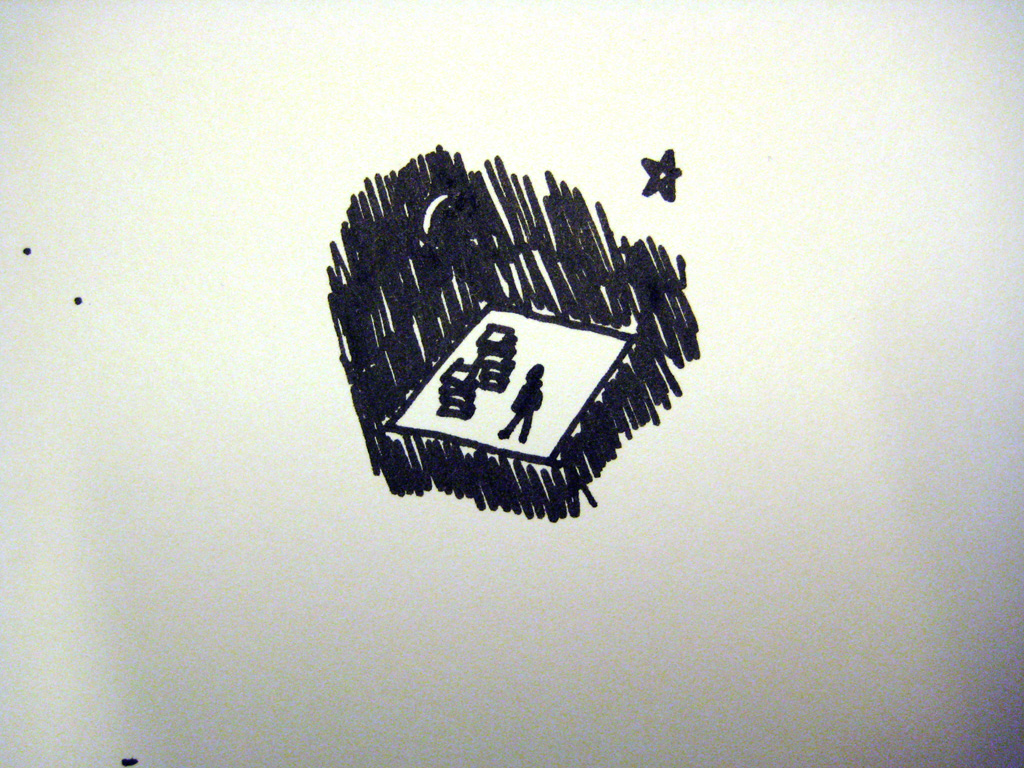
(8) A natural sun with its natural cycle of days and seasons runs outside. (9) ... as well as a regular night.

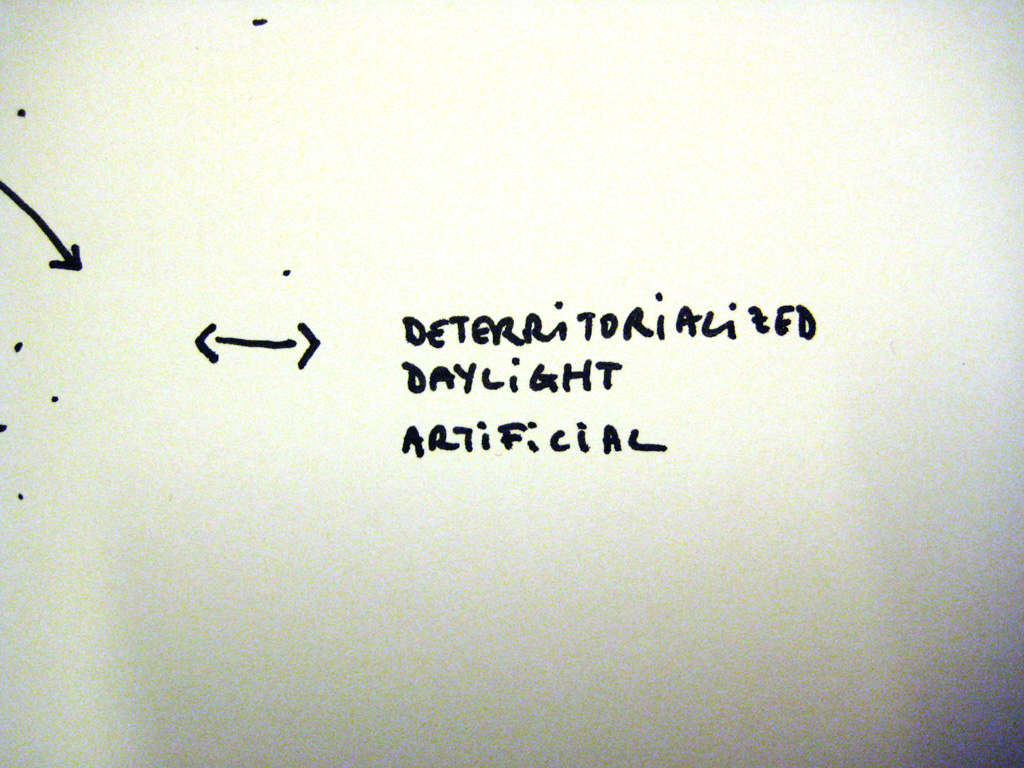
(10) An "artificial sun" or daylight is also present within the 9 m2 of the Computers Cabinet. It is always "on", yet at different strengths depending on parameters and live feeds. (11) This "sun" is called Deterritorialized Daylight. It's a daylight that is computed, artificial and triggered by the overall user's activities on the networks (both humans and robots). Therefore, it is some sort of reverse daylight: users and their activities/actions, so as other parameters, generate the amount of deterritorialized daylight (it has been historically --or naturally-- the reverse: people getting active when daylight is "on" --until fire, candles, gas and then electricity started to change the rules--).

(12) All in all, this is the full situation we asked to consider: a 9m2 space and XX m3 volume, an extended and expanded computers cabinet to inhabit, with two "suns" (and a set of other constraints/possibilities!)

Finally and that was the real purpose of the workshop, we asked the TASML students to develop proposals for this (not so fictional) context. Their projects could be dedicated to the overall situation if they desired, but mostly, we asked them them to think about smaller things that would help interact with the situation and that would take place within it: objects, devices, interfaces, programs, etc.
Students' sketches:
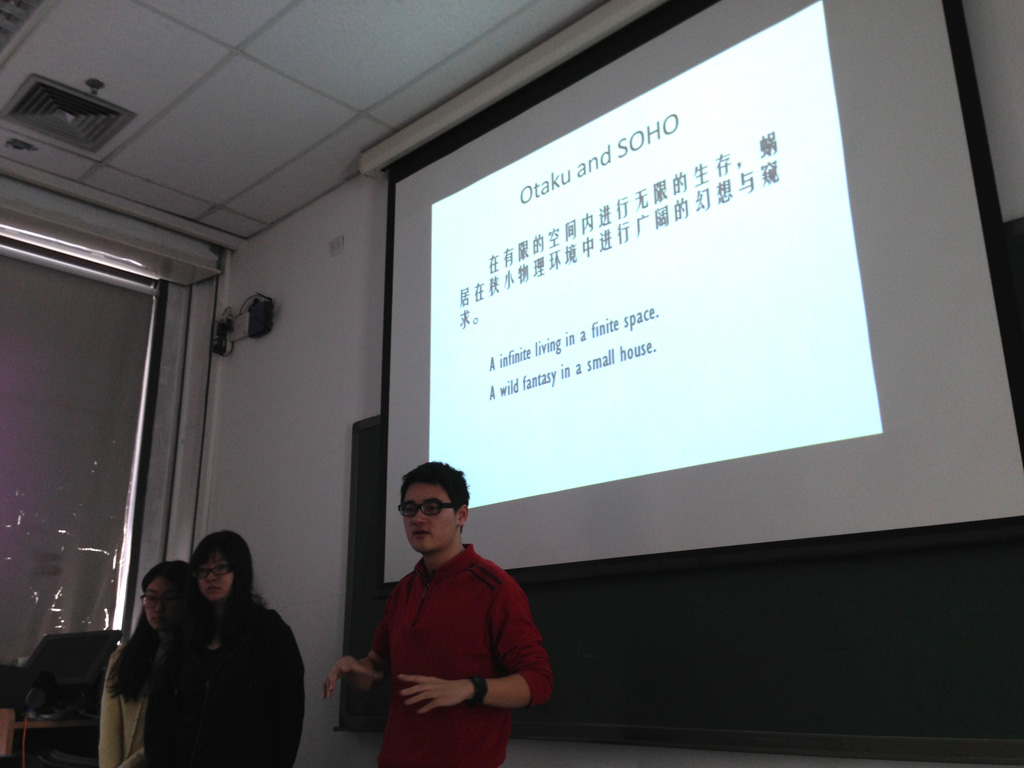
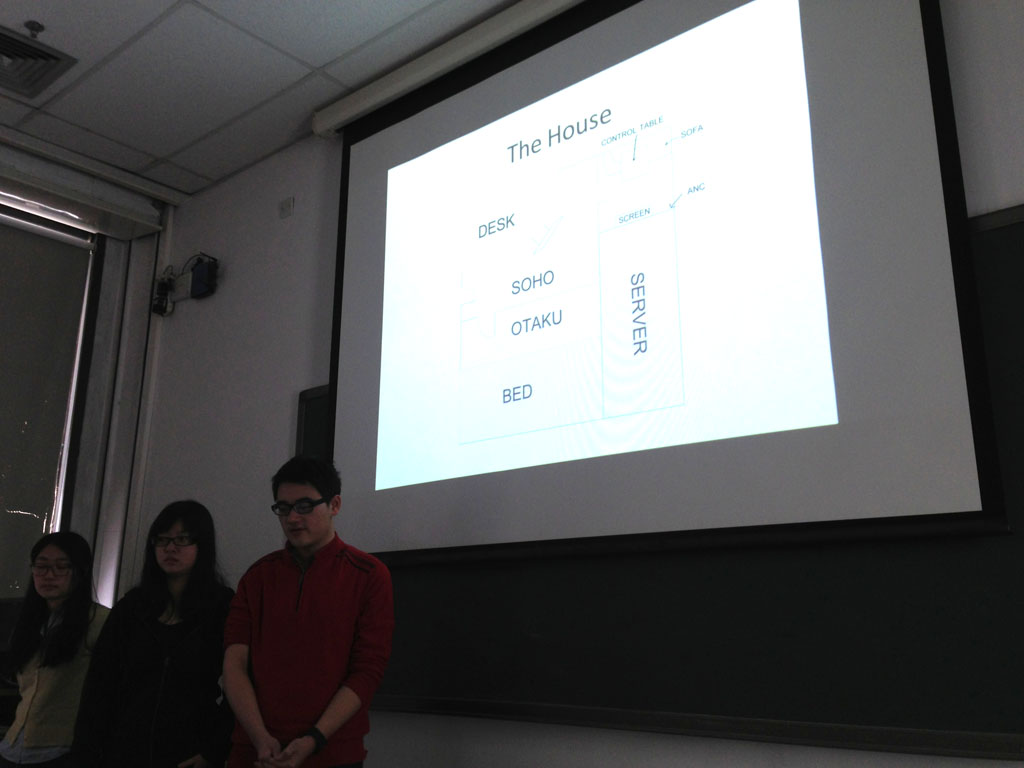
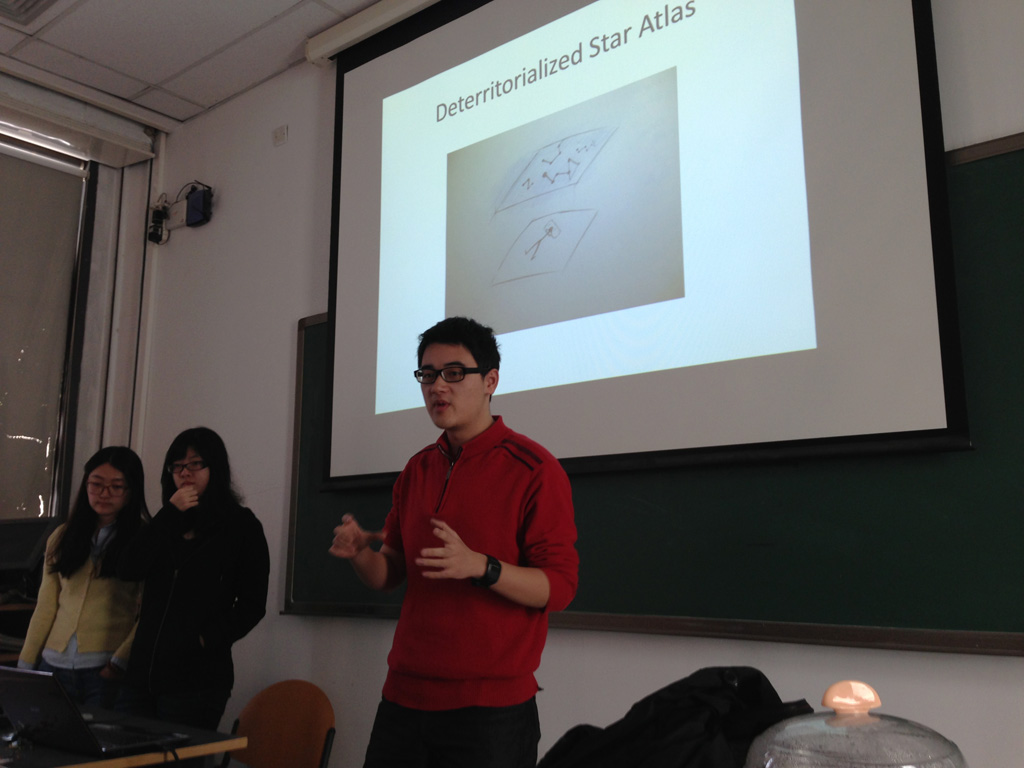
Group #1 (Na Wen, Yin Yiyi, Fang Ke) addressed the complete situation, so as all the 4 groups in fact, and came up with the idea to combine two concepts: the soho (for small office - home office) and the otaku (to my wiki understanding a word that means both "your house" and a person dedicated to an intense individual hobby, recently linked to manga readers and gamers). The computer cabinet would become a space for somebody to live partly retired from the "real" world into his fantasies and some sort of minimal living and self-sufficient space. A screen device was envisioned too which would be understood as an artificial night sky with stars. Only the map of the "stars" would be the one from the location of other cabinets and their brightness their activity.
-
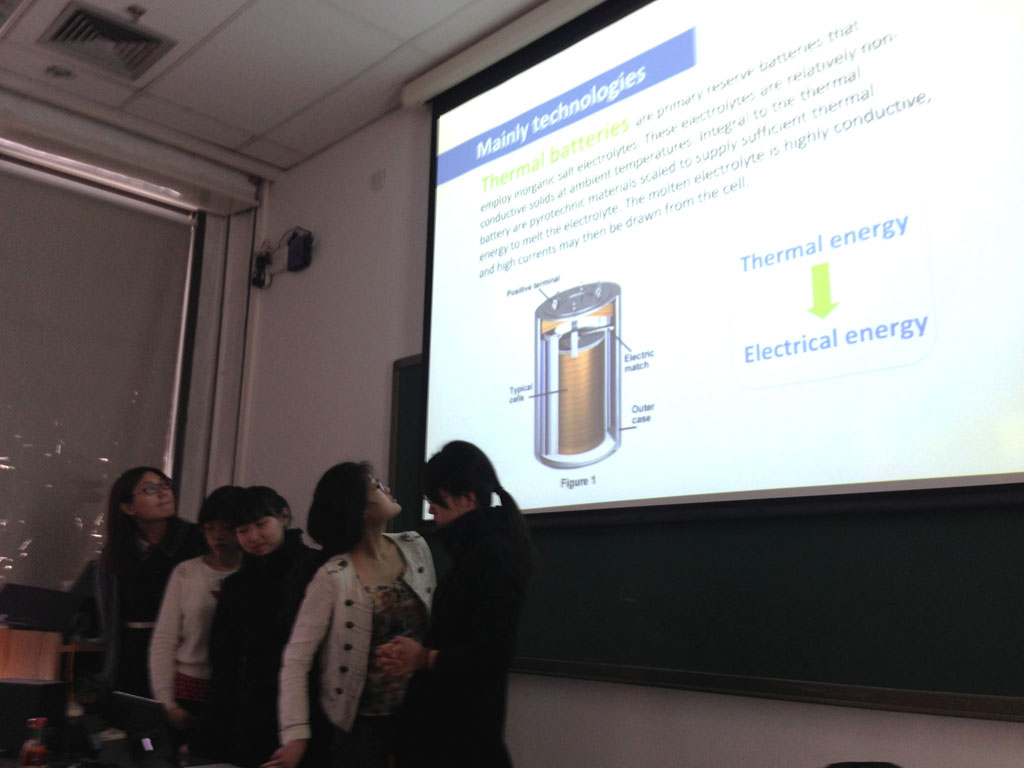
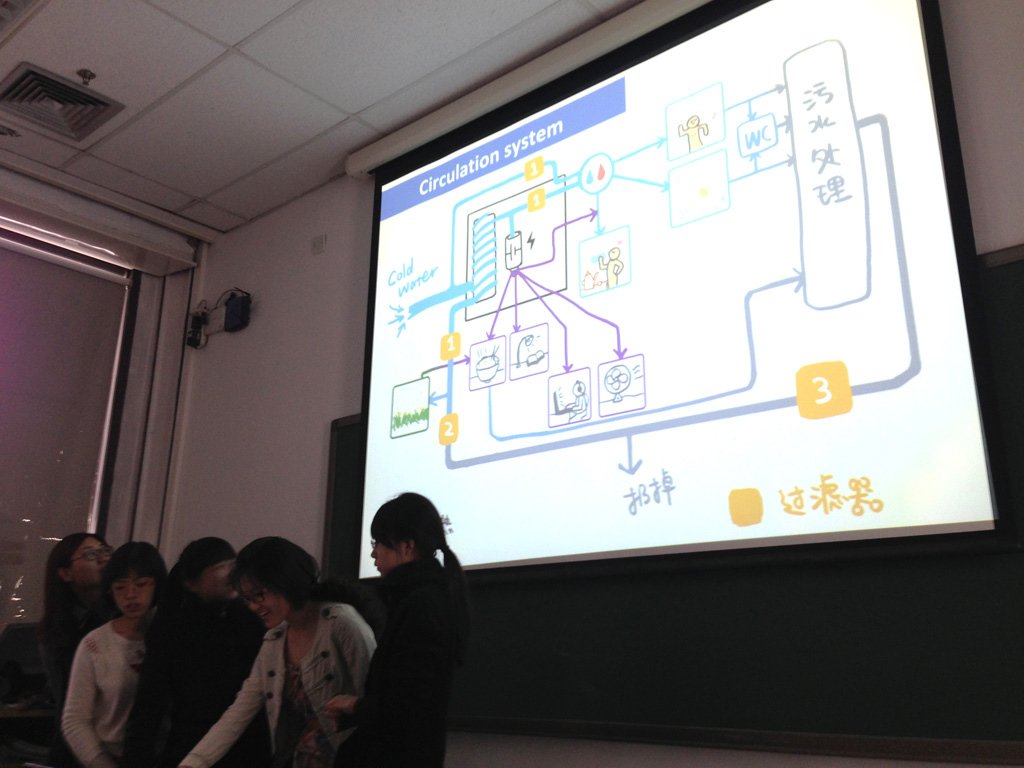
.jpg)
Group #2 (Yang Jieqin, Mou Xinzhu, Zhang Minzhi, Dong Huiyang) focused its attention around a device that converts heat into electricity (note: a "thermopile", but that is not efficient enough yet to be used in everyday situations due to its low performance. So that was fiction too). They thought about transforming the heat coming out of the servers into electricity and therefore produce electricity for the Cabinet (which is not possible today, at least to really power some demanding devices). This heat would also serve to pre-heat the water. Servers were located under the ceiling and were creating therefore a heat zone. The overall proposal was then a self-sufficient space (bio-sphere like) with a cycle of funtions that would follow a logic of distribution from hot > cold, clear water > waste water. The water at the end of the cycle would serve to grow vegetables that would then clean the air, etc.
-
.jpg)
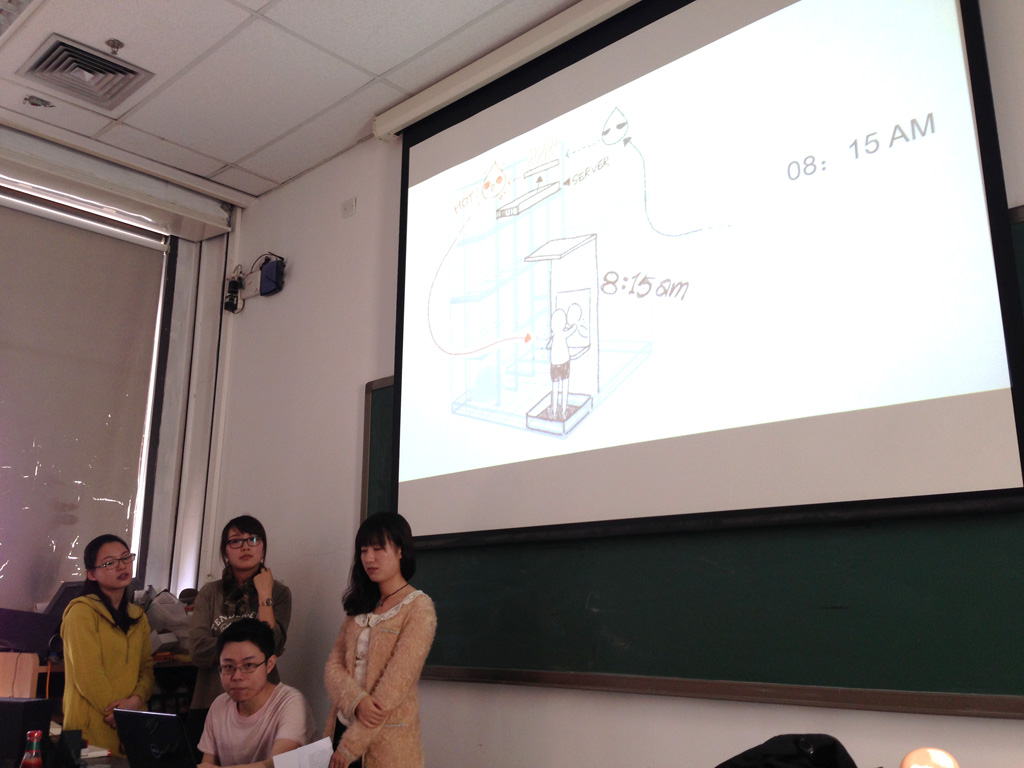
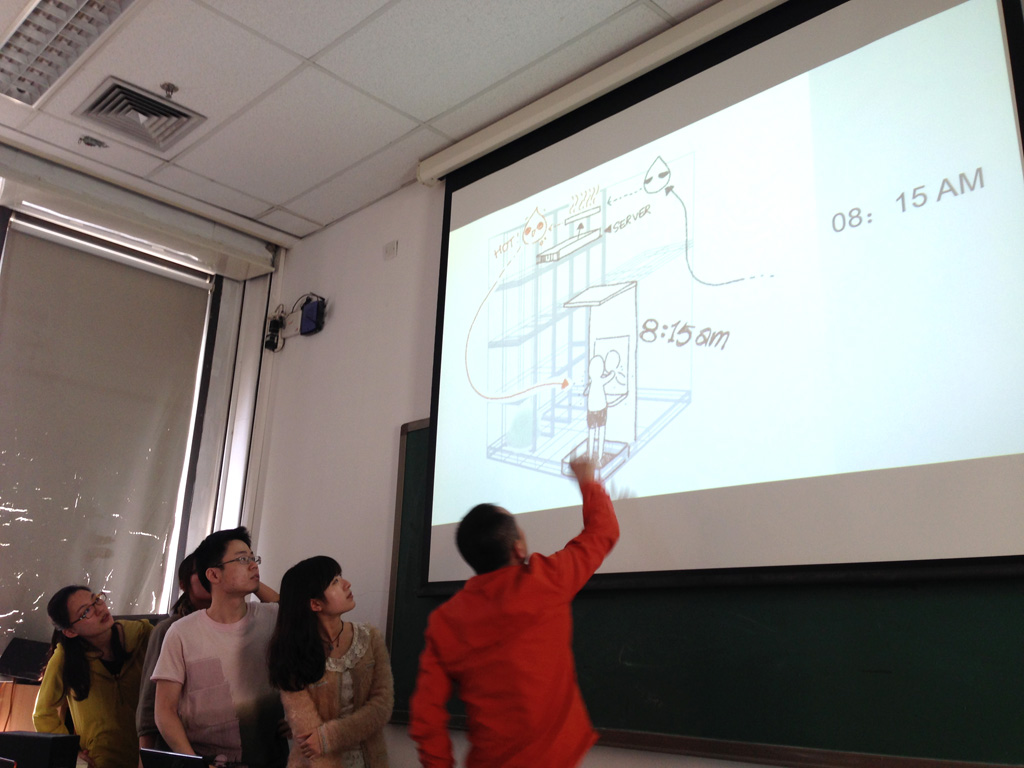
Group #3 (Ao Mengxing, Qian Yunzi, Liu Chang, Zhang Huixin) had an interesting early sketch: they started to design the Cabinet based on the modular system of the actual servers cabinet. Extending it to the 9 m2 size and filling it with other domestic functions. A description of activities happening along time in this space started to suggest that there could be some migration within this space. I suggested they could try a mapping between time, location in the cabinet, functions and possibly heat, while Zhang thought about redesigning the modular aspects of the regular cabinet. These approaches could have triggered a very interesting singular project or dedicated devices I believe. Shame that they didn't continue!
-
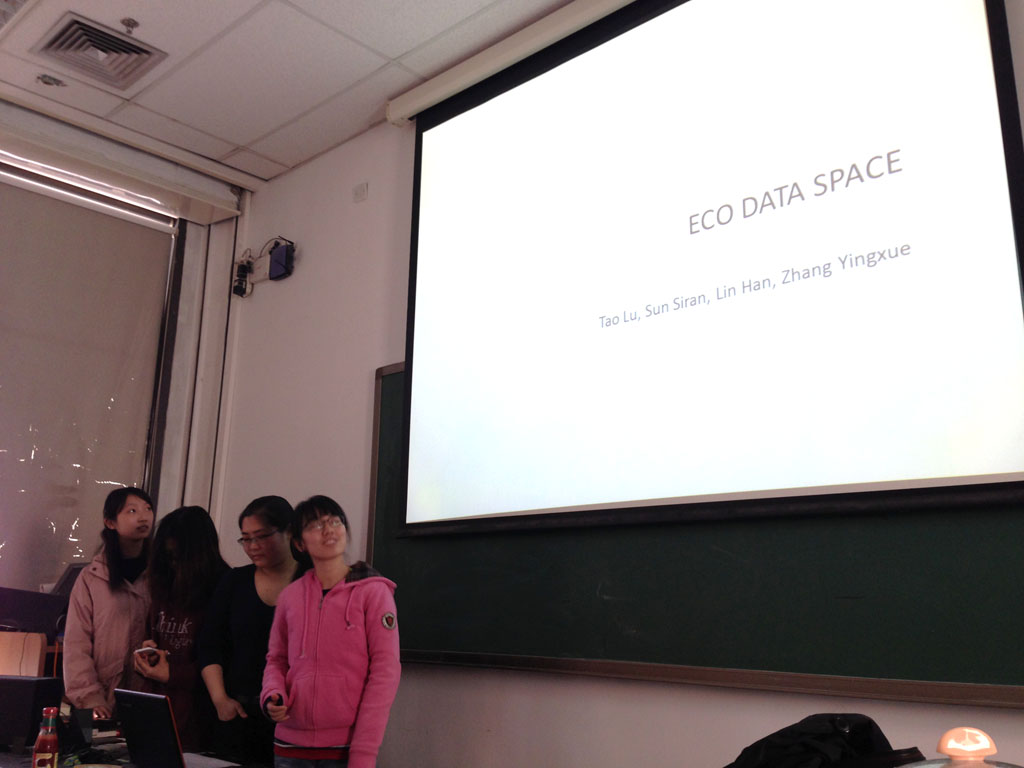

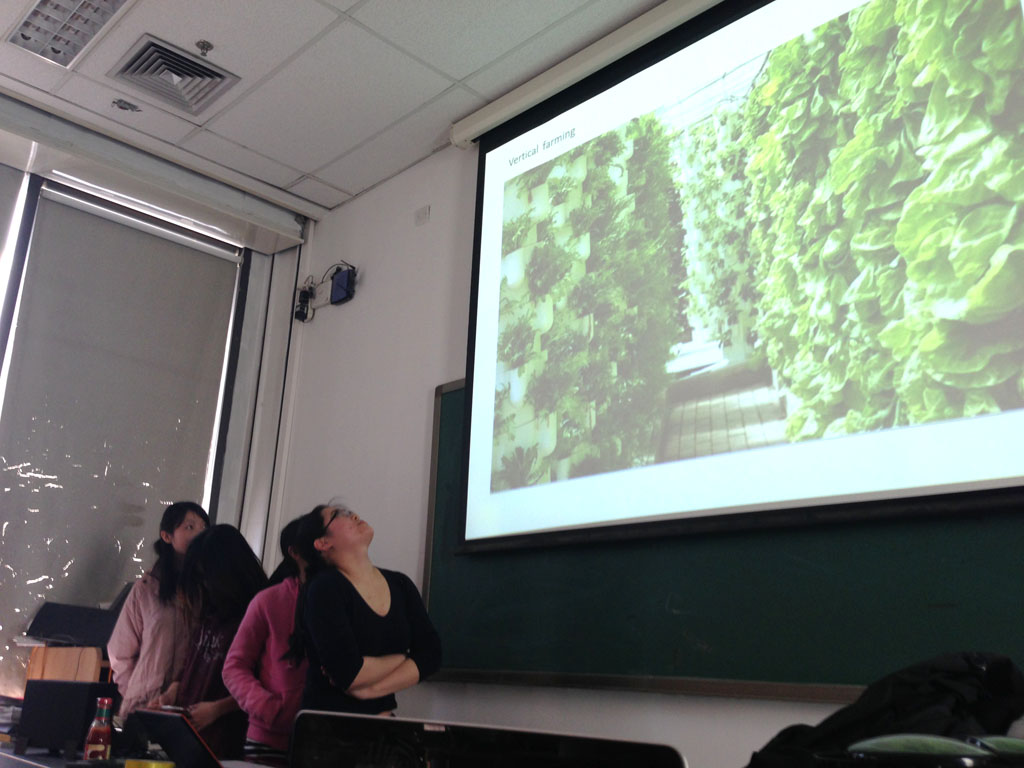
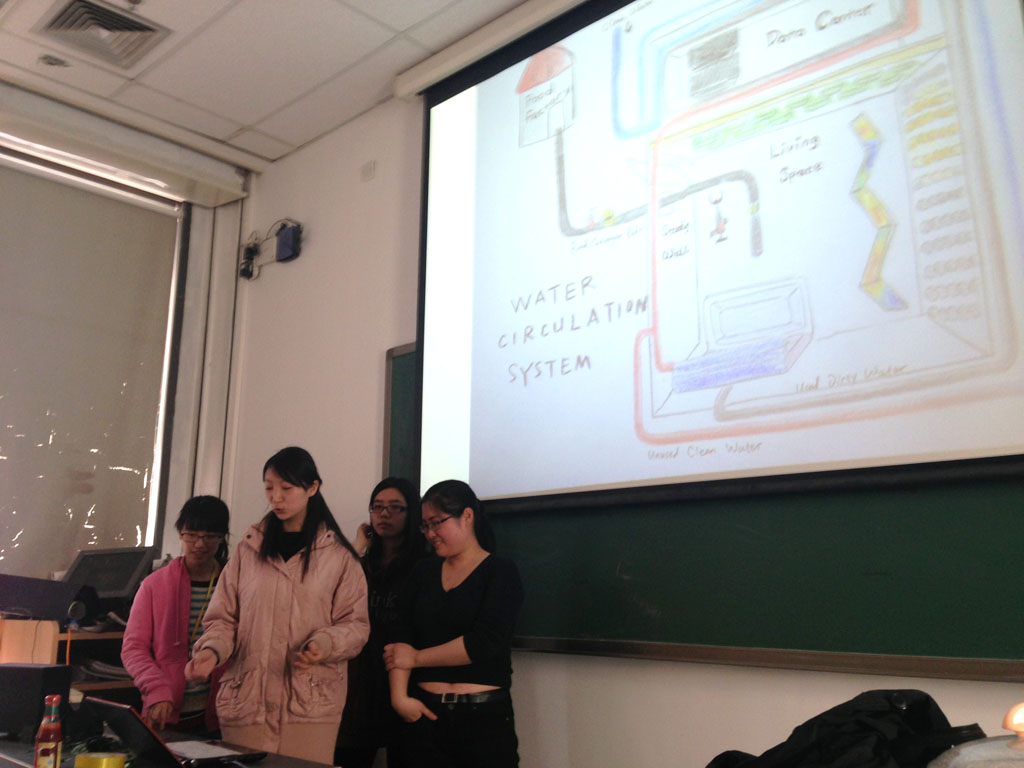
Group #4 (Zhang Yingxue, Lin Han, Sun Siran, Tao Lu) combined into one proposal (drawing) each of the four members' approach. The overall design was also a bit into the self-sustainable approach (bio-sphere oriented), yet with different devices: a decorative wallpaper (information design), a wall of vegetables (air cleaning and food production), a game based on a appartment bycycle that would produce electricity and a strange whilpool.
-
... and finally Group #5 stayed asleep on the day of presentation!
All in all, there were some interesting early sketches but that probably stoped too early or went in the wrong direction after the first presentation, into too applied or functional aproaches. That's why we discussed together with Zhang and Cheng Guo (TASML assistant) to plan a public call for students on different campuses, as the theme of work looks quite open for interesting interdisciplinary proposals. (More will follow about this).
One group still works on the project though and will deliver its semester work about it.
Related Links:
fabric | rblg
This blog is the survey website of fabric | ch - studio for architecture, interaction and research.
We curate and reblog articles, researches, writings, exhibitions and projects that we notice and find interesting during our everyday practice and readings.
Most articles concern the intertwined fields of architecture, territory, art, interaction design, thinking and science. From time to time, we also publish documentation about our own work and research, immersed among these related resources and inspirations.
This website is used by fabric | ch as archive, references and resources. It is shared with all those interested in the same topics as we are, in the hope that they will also find valuable references and content in it.
